译林版(三起)Unit 3 A healthy diet Sound time & Cluture time & Cartoon time课件(共31张PPT)
文档属性
| 名称 | 译林版(三起)Unit 3 A healthy diet Sound time & Cluture time & Cartoon time课件(共31张PPT) |  | |
| 格式 | pptx | ||
| 文件大小 | 5.5MB | ||
| 资源类型 | 教案 | ||
| 版本资源 | 牛津译林版 | ||
| 科目 | 英语 | ||
| 更新时间 | 2021-02-25 10:20:09 | ||
图片预览


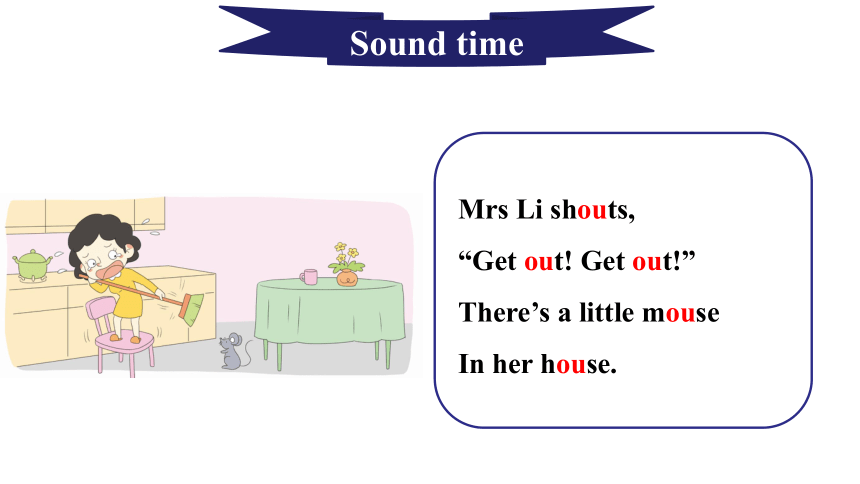
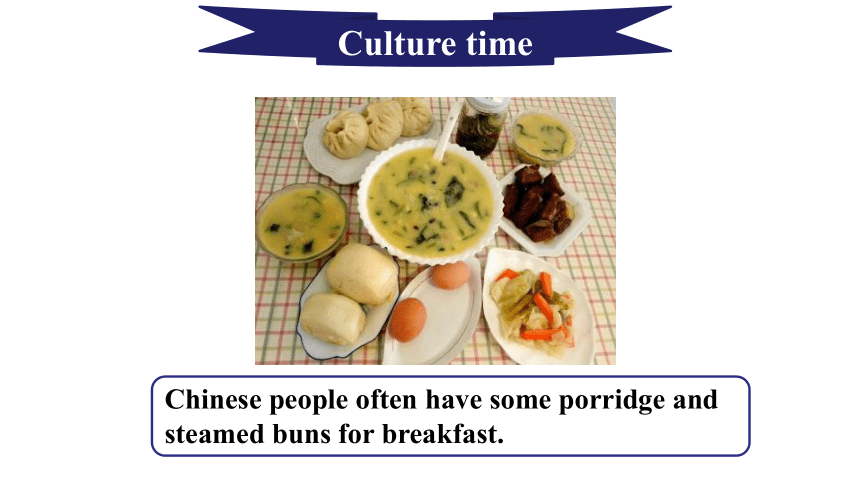

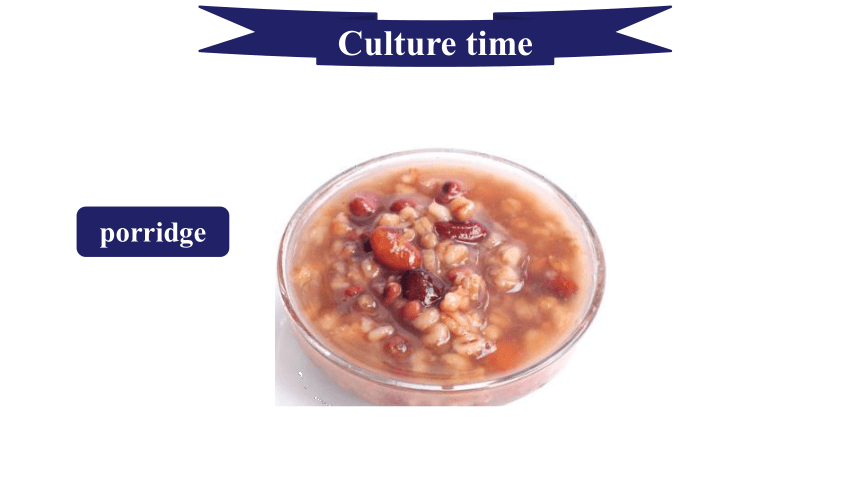

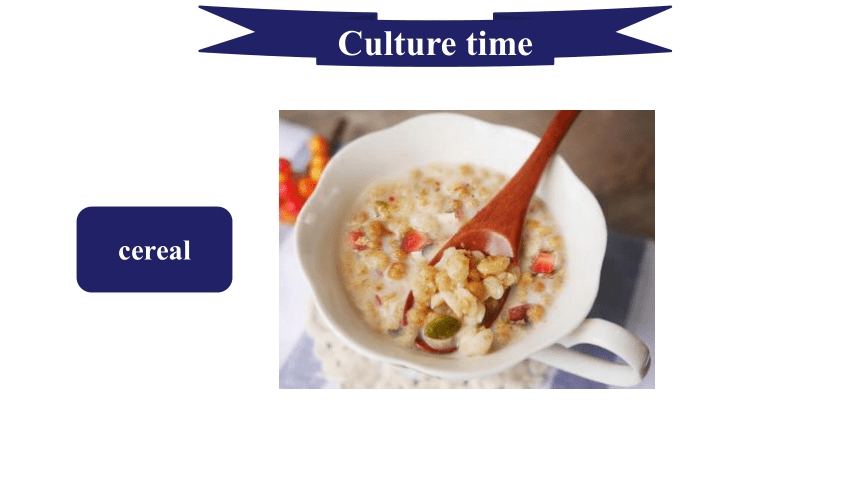

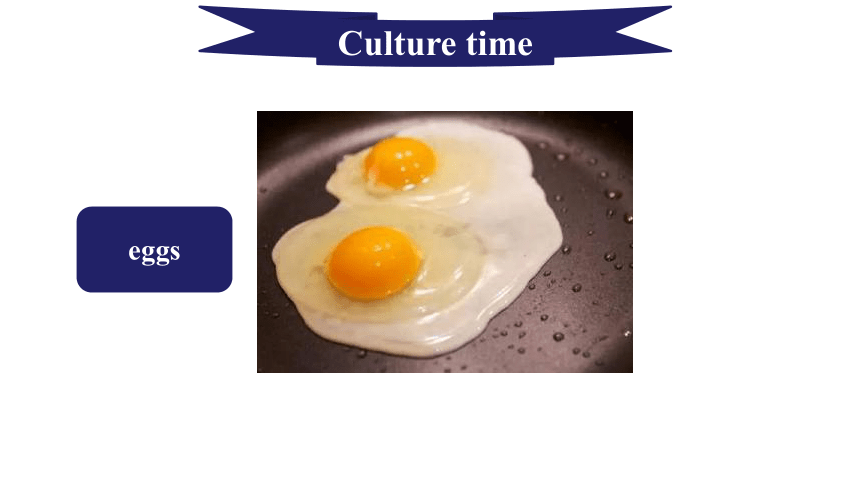


文档简介
Sound time & Culture time & Cartoon time
…………………………………
Unit 3 A healthy diet
about
OU
Sound time
house
mouse
out
shout
发音方式:
是双元音,发音时声带振动。发音时,由 音向 音滑动,前重后轻,口形随之变化。
Sound time
Mrs Li shouts,
“Get out! Get out!”
There’s a little mouse
In her house.
Culture time
Chinese people often have some porridge and steamed buns for breakfast.
Culture time
Western people often have cereal, bread, eggs and
sausages for breakfast.
Culture time
porridge
Culture time
steamed buns
Culture time
cereal
Culture time
bread
Culture time
eggs
Culture time
sausages
Cartoon time
1
There is not much food in the fridge.
I have to go to the supermarket. Do
you want to come with me, Sam?
Yes, Mum. Let’s go.
Cartoon time
2
Sam sees some drinks.
Yes, but take a small bottle. You
shouldn’t drink too much cola.
Mum, can I have some cola?
cola
可乐
例句 She shouldn’t have cola and hamburgers.
她不应该喝可乐、吃汉堡。
单元新词
短语 a can of cola 一听可乐
Cartoon time
3
Sam wants some fish too.
I want this big fish, Mum.
OK.
Cartoon time
4
Then, Sam sees some rice.
Mum, do we need rice?
Yes, we need a lot of rice. Take the
big bag.
need
需要
例句 He needs to drink some water.
他需要喝一些水。
单元新词
形近 feed(动词)喂养
短语 need help 需要帮助
Cartoon time
5
Now they are going home.
The fish is too heavy. Can we have a rest, Mum?
OK.
Cartoon time
6
Oh no!
Cartoon time
3
Finally, Sam and Bobby find a hole in the ground.
Yes! I can see it. But it’s too deep. I can’t reach it.
Is the ball in the hole?
reach
够得着
单元新词
短语 reach for 伸手去拿
例句 The giraffe can reach the top of the tree.
长颈鹿可以够着树的顶端。
Cartoon time
4
Sam has an idea. He brings some water quickly and pours it into the hole.
There are so many balls!
Well done, Sam!
Let’s act out the story.
知识讲解
There is not much food in the fridge.
1
There be 句型用于表示某地有某人或某物。基本结构为:
1
注意:be 动词要与离它最近的名词的数保持一致,即遵循
“就近原则”。
There + be 动词 + 人/物(+地点).
知识讲解
have 与 there be 都可意为“有”,其区别在于:
have 表示主观上的“拥有”,即“某人有某物”,
而 there be 表示客观上的“存在”,即“某地有某人或某物”。
拓展
知识讲解
此处 much 意为“很多”,修饰不可数名词,常用于疑问句和否定句中。
2
知识讲解
I have to go to the supermarket.
2
have to 意为“不得不;必须”,后接动词原形,表示迫于某种限制条件或客观需要不得不做某事。
例句 I have to stay at home.
我不得不待在家里。
知识讲解
Mum, can I have some cola?
3
“Can I have some...?”是一个由 can 引导的一般疑 问句,意为“我可以要一些……吗?”,该句型还常用来询问对方自己能否吃/喝一些什么,并希望得到肯定回答。
例句 —Can I have some water? 我可以喝一些水吗?
—Yes, sure. 当然可以
知识讲解
You shouldn’t drink too much cola.
4
too much 意为“太多”,修饰不可数名词;too many 也意为“太多”,修饰可数名词复数形式。
例句 Too much plastic is bad for the earth.
太多塑料对地球有害。
知识讲解
Mum, do we need rice?
5
此处 need 作实义动词,意为“需要”,有人称和数的变化。表示需要做某事时,后面需接动词不定式, 即 need to do sth.。
例句 John needs a new bike.
约翰需要一辆新自行车。
知识讲解
need 还可以作情态动词,后接动词原形,无人称和数的变化。
例句 You needn’t finish the work today.
你不必今天做完这项工作。
拓展
…………………………………
Unit 3 A healthy diet
about
OU
Sound time
house
mouse
out
shout
发音方式:
是双元音,发音时声带振动。发音时,由 音向 音滑动,前重后轻,口形随之变化。
Sound time
Mrs Li shouts,
“Get out! Get out!”
There’s a little mouse
In her house.
Culture time
Chinese people often have some porridge and steamed buns for breakfast.
Culture time
Western people often have cereal, bread, eggs and
sausages for breakfast.
Culture time
porridge
Culture time
steamed buns
Culture time
cereal
Culture time
bread
Culture time
eggs
Culture time
sausages
Cartoon time
1
There is not much food in the fridge.
I have to go to the supermarket. Do
you want to come with me, Sam?
Yes, Mum. Let’s go.
Cartoon time
2
Sam sees some drinks.
Yes, but take a small bottle. You
shouldn’t drink too much cola.
Mum, can I have some cola?
cola
可乐
例句 She shouldn’t have cola and hamburgers.
她不应该喝可乐、吃汉堡。
单元新词
短语 a can of cola 一听可乐
Cartoon time
3
Sam wants some fish too.
I want this big fish, Mum.
OK.
Cartoon time
4
Then, Sam sees some rice.
Mum, do we need rice?
Yes, we need a lot of rice. Take the
big bag.
need
需要
例句 He needs to drink some water.
他需要喝一些水。
单元新词
形近 feed(动词)喂养
短语 need help 需要帮助
Cartoon time
5
Now they are going home.
The fish is too heavy. Can we have a rest, Mum?
OK.
Cartoon time
6
Oh no!
Cartoon time
3
Finally, Sam and Bobby find a hole in the ground.
Yes! I can see it. But it’s too deep. I can’t reach it.
Is the ball in the hole?
reach
够得着
单元新词
短语 reach for 伸手去拿
例句 The giraffe can reach the top of the tree.
长颈鹿可以够着树的顶端。
Cartoon time
4
Sam has an idea. He brings some water quickly and pours it into the hole.
There are so many balls!
Well done, Sam!
Let’s act out the story.
知识讲解
There is not much food in the fridge.
1
There be 句型用于表示某地有某人或某物。基本结构为:
1
注意:be 动词要与离它最近的名词的数保持一致,即遵循
“就近原则”。
There + be 动词 + 人/物(+地点).
知识讲解
have 与 there be 都可意为“有”,其区别在于:
have 表示主观上的“拥有”,即“某人有某物”,
而 there be 表示客观上的“存在”,即“某地有某人或某物”。
拓展
知识讲解
此处 much 意为“很多”,修饰不可数名词,常用于疑问句和否定句中。
2
知识讲解
I have to go to the supermarket.
2
have to 意为“不得不;必须”,后接动词原形,表示迫于某种限制条件或客观需要不得不做某事。
例句 I have to stay at home.
我不得不待在家里。
知识讲解
Mum, can I have some cola?
3
“Can I have some...?”是一个由 can 引导的一般疑 问句,意为“我可以要一些……吗?”,该句型还常用来询问对方自己能否吃/喝一些什么,并希望得到肯定回答。
例句 —Can I have some water? 我可以喝一些水吗?
—Yes, sure. 当然可以
知识讲解
You shouldn’t drink too much cola.
4
too much 意为“太多”,修饰不可数名词;too many 也意为“太多”,修饰可数名词复数形式。
例句 Too much plastic is bad for the earth.
太多塑料对地球有害。
知识讲解
Mum, do we need rice?
5
此处 need 作实义动词,意为“需要”,有人称和数的变化。表示需要做某事时,后面需接动词不定式, 即 need to do sth.。
例句 John needs a new bike.
约翰需要一辆新自行车。
知识讲解
need 还可以作情态动词,后接动词原形,无人称和数的变化。
例句 You needn’t finish the work today.
你不必今天做完这项工作。
拓展
